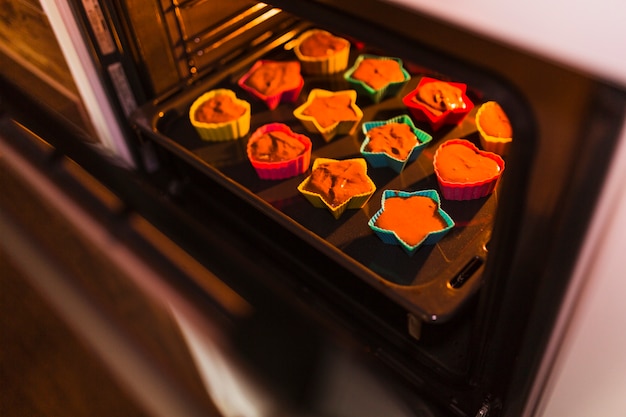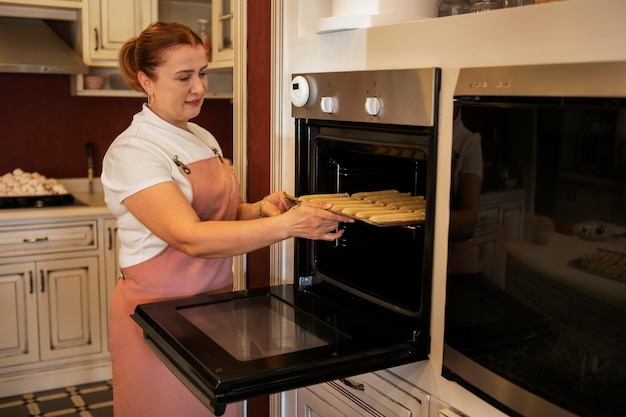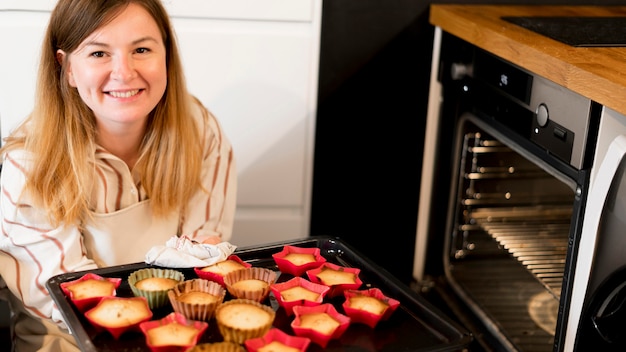You've heard the whispers, maybe even tasted a bite, but you're still unsure how to conquer the art of boudin at home. Well, let me tell you, friend, there's no need to be intimidated! I'm here to share my tried-and-true secrets, my personal tips and tricks, for baking the most delicious, crispy boudin you've ever dreamt of. This isn't just about throwing some sausage in the oven, we're talking about achieving a symphony of textures and flavors, with a golden-brown, crispy exterior and a juicy, flavorful interior that'll leave you craving for more. So, grab your apron, gather your ingredients, and let's embark on a culinary journey to boudin perfection!
(Part 1) Unveiling the Mystery: What is Boudin?

Before we jump into the oven-baking process, let's clear the air about what boudin truly is. For the uninitiated, it's a Cajun and Creole sausage, a symphony of flavors that celebrates the richness of Southern cuisine. Picture this: a blend of rice, pork, and a medley of spices, all carefully encased in a sausage casing. It's a classic, a staple, and trust me, it's delicious enough to captivate taste buds anywhere in the world. And the beauty of boudin lies in its versatility – you can find it in various forms, from the traditional links to patties, even in a gravy-like "boudin balls" version. But for this guide, we're focusing on the link variety, the most common and, in my humble opinion, the most satisfying.
More than Just Sausage: A Cultural Tapestry
Boudin is much more than just another sausage; it's a cultural symbol, a testament to the rich history and traditions of Louisiana. Its roots stretch back to France, but it was in the vibrant heart of Louisiana that boudin truly blossomed, evolving into the delightful treat we know and love today. It's a dish that brings people together, a symbol of community, and something I've always cherished sharing with family and friends. The aroma of boudin baking in the oven is intoxicating, filling the air with a warm, comforting scent that transports you straight to the heart of Louisiana. It's not just a meal, it's an experience.
(Part 2) Choosing Your Boudin: The Key to Success

Now, the first step towards achieving boudin brilliance is selecting the right ingredients. This isn't a time for settling, you've got to be picky! While you can find pre-made boudin at most Southern grocery stores, let me assure you, making it from scratch is a whole other level of satisfaction. But for those starting their boudin journey, or simply craving a quick and easy option, picking up some high-quality pre-made boudin is a great starting point.
Freshness is Everything: Seeking the Perfect Boudin
First and foremost, look for boudin that sings with freshness. You want a sausage that's neither too pale nor too dark, with a consistent, inviting texture. If you see any signs of spoilage, like mold or a slimy texture, put it back – we're aiming for perfection! Always check the packaging for a tight seal and make sure the expiration date is well within reach. And don't be shy about asking the butcher for their expert opinion – they're usually happy to point you in the right direction.
Beyond the Look: Tapping into the Flavor Profile
Next, consider the flavor profile that speaks to your soul. Do you crave a spicy boudin that packs a punch, or do you prefer a milder, savory flavor that lingers on the palate? Most boudin is seasoned with a blend of spices, but some might offer additional ingredients like cayenne pepper, paprika, or even a hint of onion. Read the label carefully, and choose the flavor that harmonizes with your taste buds. And remember, if your adventurous spirit calls, you can always add your own spices to the boudin once it's cooked, transforming it into a personal masterpiece.
Navigating the World of Boudin Varieties
Here's a breakdown of the most popular boudin varieties, so you can confidently navigate the world of this culinary delight:
| Type | Description |
|---|---|
| Traditional Boudin | A classic, crafted with rice, pork, and a symphony of spices. Typically boasts a mild, comforting flavor. |
| Spicy Boudin | A bolder option, seasoned with cayenne pepper or other chili peppers, delivering a fiery kick that warms the soul. |
| Boudin Balls | A gravy-like delight, often served over a bed of rice, showcasing a unique texture and rich flavor. |
| Boudin Patties | Made from ground boudin, usually pan-fried or baked, offering a convenient and satisfying option. |
(Part 3) The Art of Oven-Baking Boudin: Unlocking Crispy Perfection

Now, let's delve into the heart of the matter, the transformative process of baking boudin. This method is so simple, it's practically foolproof, and the results are nothing short of remarkable. Say goodbye to greasy, overcooked boudin – we're aiming for crispy, flavorful perfection!
Temperature Matters: The Key to Golden-Brown Bliss
The secret to achieving that beautiful golden-brown, crispy exterior without drying out the inside lies in the right temperature. I always bake my boudin at 375°F (190°C), the sweet spot that allows for even cooking and a symphony of textures. Preheating your oven is crucial for consistent results, just like a good cup of tea needs time to brew. So, pop your oven on and let it heat up good!
Setting the Stage: Preparing Your Boudin for Oven Glory
You can bake your boudin directly on a baking sheet, but for optimal results, I recommend using a wire rack. This allows air to circulate freely around the boudin, ensuring even cooking and a beautiful, crispy finish. Line your baking sheet with parchment paper or aluminum foil for easy cleanup, and lay the wire rack on top. Now, arrange your boudin links on the wire rack, leaving some space between them for air circulation. No crowded boudin here!
Timing is Everything: Baking Your Boudin to Perfection
The baking time will depend on the size and thickness of your boudin links, but generally, you'll need about 20-25 minutes for the boudin to cook through and reach that perfect level of crispiness. Keep a watchful eye on your boudin, you don't want to overcook it! It should be golden brown and crispy on the outside, with a juicy, cooked-through interior.
Testing for Doneness: The Art of Perfection
You can always test for doneness by carefully slicing into a link. If the inside is cooked through, no longer pink, it's ready to enjoy! For extra assurance, you can use a meat thermometer to ensure the internal temperature reaches 160°F (71°C) – safety first! Once your boudin is cooked to perfection, let it rest for a few minutes before serving. This allows the juices to redistribute, guaranteeing a more flavorful bite.
(Part 4) Elevate the Experience: side dishes and Toppings
So, you've got your crispy, delicious boudin, ready to be devoured. But how to truly elevate the experience? Well, the possibilities are as endless as your imagination! You can savor it on its own, of course, but pairing it with complementary side dishes and toppings can take your boudin to a whole new level of culinary bliss.
Cajun Classics: A Symphony of Flavors
First up, we have the classic Cajun sides that create a harmonious blend with boudin. You can't go wrong with a simple serving of white rice, a comforting canvas for the rich flavors of boudin. Or maybe some creamy mashed potatoes, their smooth texture offering a delightful contrast to the crispy boudin. A flavorful cornbread, like a Southern-style skillet cornbread, is another perfect accompaniment, its sweetness adding a delightful counterpoint to the savory boudin. These sides provide a comforting base for the boudin's richness and depth.
For the Bold Palate: Adventures in Flavor
Now, if you crave a touch of adventure, consider adding some vibrant toppings to your boudin. A dollop of spicy mustard or a sprinkle of hot sauce adds a fiery kick, waking up your taste buds. For a tangy and sweet touch, try a squeeze of lemon or lime juice, or even a drizzle of honey, a perfect balance of contrasts. A simple sprinkle of chopped green onions or cilantro adds a fresh, herbal note, a burst of brightness that elevates the overall experience.
Crafting Your Own Boudin Masterpiece
Here are some ideas for building the perfect boudin plate, a testament to your culinary creativity:
- Classic: Boudin links, a mound of fluffy white rice, and a warm slice of cornbread. A symphony of familiar comfort.
- Spicy: Boudin links, a comforting bowl of mashed potatoes, and a generous drizzle of hot sauce. A fiery dance on the palate.
- Citrusy: Boudin links, a bed of fluffy rice, and a squeeze of fresh lemon juice. A burst of brightness that elevates the flavors.
- Herby: Boudin links, a slice of cornbread, and a sprinkle of chopped green onions. A refreshing blend of savory and fresh.
(Part 5) Boudin Beyond the Oven: A culinary adventure
You've mastered the art of baking boudin to crispy perfection, but did you know there are other ways to enjoy this culinary delight? Boudin is a versatile ingredient, a canvas for culinary creativity, so let your imagination soar!
Fried Boudin: A Crispy Classic
For a truly authentic experience, you can fry boudin in a skillet with some oil. This method achieves a super crispy exterior, a symphony of textures and flavors, and is a staple in many Cajun kitchens. Just be sure to use a good quality oil with a high smoke point, and cook it over medium heat for even browning. And be careful, the oil can splatter!
Boudin's Versatility: A Culinary Journey
Boudin isn't just a standalone dish, it can be a star ingredient in a variety of recipes. Add it to soups, stews, or even pasta dishes for a burst of flavor and texture. It also makes an amazing topping for pizzas, burgers, or salads, a delicious surprise that elevates the overall experience. Don't be afraid to experiment, to let your creativity flow, and see what new culinary masterpieces you can create.
Unleash Your Culinary Imagination
The possibilities for boudin are truly endless! You can find it in all sorts of forms, from traditional links to patties, even in a gravy-like "boudin balls" version. And with a little creativity, you can even use boudin as a filling for things like empanadas, tacos, or even spring rolls. So go wild, get creative, and enjoy this amazing Cajun delicacy!
(Part 6) Preserving Perfection: The Art of Boudin Storage
Now that you've mastered the art of baking boudin, it's time to learn how to store it properly. After all, you don’t want your hard work to go to waste!
Refrigerating Leftovers: Keeping the Flavor Fresh
If you have leftover boudin, store it in an airtight container in the refrigerator for up to 3-4 days. Make sure to let it cool completely before refrigerating, and don't overcrowd the container. When you’re ready to reheat it, you can simply bake it again in the oven or microwave it for a few minutes. The reheating process might slightly soften the crispy exterior, but it will still taste delicious!
Freezing for Later: Preserving Boudin for Future Enjoyment
For longer storage, you can freeze boudin for up to 2-3 months. Just wrap it tightly in plastic wrap or aluminum foil before placing it in a freezer-safe bag. To reheat frozen boudin, you can simply bake it directly from frozen, adding a few minutes to the cooking time. Just remember to thaw it in the refrigerator overnight before reheating to ensure even cooking.
(Part 7) Boudin: A Culinary Adventure Awaits
I hope this guide has sparked your culinary curiosity and inspired you to embrace the world of boudin! It's a culinary adventure waiting to be explored, with endless possibilities for flavor and creativity. So next time you're looking for a delicious and satisfying meal, give boudin a try. You won't regret it!
(Part 8) FAQs: Your Boudin Questions Answered
Here are some frequently asked questions about boudin that might help you on your culinary journey:
1. Can I substitute pork for other meats in boudin?
While pork is the traditional meat used in boudin, you can absolutely substitute it with other meats like chicken or turkey. This is a great option for those seeking a leaner alternative. Just make sure to adjust the seasoning accordingly to complement the new meat.
2. What spices are typically used in boudin?
Boudin is usually seasoned with a blend of spices, including paprika, cayenne pepper, black pepper, garlic powder, onion powder, and salt. The exact blend can vary depending on the recipe or the region, adding a unique touch to each variation.
3. Is boudin safe to eat?
Yes, boudin is safe to eat when properly cooked. It's important to make sure the internal temperature reaches 160°F (71°C) to kill any harmful bacteria.
4. Can I make boudin at home?
Absolutely! There are many boudin recipes available online and in cookbooks, allowing you to create your own culinary masterpiece. It's a fun and rewarding process, and you can customize the recipe to your liking, adding your own personal touch.
5. What are some other ways to enjoy boudin?
Aside from baking, frying, and enjoying it as a standalone dish, you can also add boudin to soups, stews, pasta dishes, pizzas, burgers, and salads. Get creative and experiment with different flavors, exploring the versatility of this culinary treasure.
Everyone is watching

How to Cook Frozen Lobster Tails Perfectly: A Step-by-Step Guide
RecipesLobster. Just the word conjures up images of lavish meals, special occasions, and a taste of luxury. But let's...

Pigs in a Blanket Cooking Time: How Long to Bake for Perfect Results
RecipesAh, pigs in a blanket. Just the name conjures up images of those delightful little parcels of crispy pastry en...

Pork Fillet Cooking Time: How Long to Cook It Perfectly
RecipesPork fillet, or tenderloin as it's sometimes called, is a real favourite in our house. It's so versatile, and...

The Ultimate Guide to Cooking Delicious Frankfurters
RecipesLet's face it, we all love a good frankfurter. It's a classic, simple, and always satisfying. But let's be rea...

Wolf Meat Recipes: A Guide to Cooking Wild Game
RecipesLet's be honest, you don't see wolf meat at your local butcher shop every day. It's a bit of a wild card, but ...
